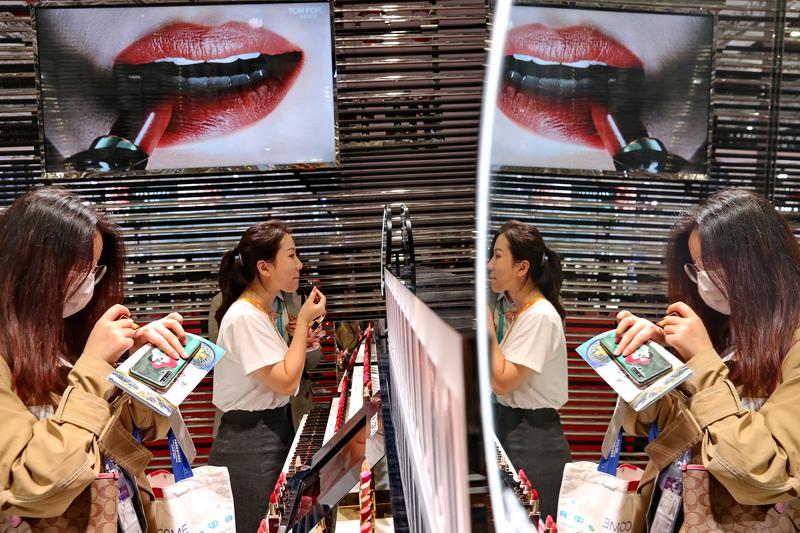 Visitors check out cosmetics during the fourth China International Import Expo in Shanghai in November. (XU CONGJUN / FOR CHINA DAILY)
Visitors check out cosmetics during the fourth China International Import Expo in Shanghai in November. (XU CONGJUN / FOR CHINA DAILY)
Medical aesthetics, cosmetics featuring Chinese elements, and skincare products targeting adolescents are likely to gain steam in China's beauty industry in the years to come, a study by consultancy Ries said.
These trends all fit into a growing sense of beauty and the increasing inclusion of varying values as a result of growing consumer disposable income, the marketing expert specializing in positioning said.
... people’s acceptance of aesthetic medicine consumption has gradually been boosted by the dual influence of trade-up trends and increased awareness due to novel digital marketing advancements.
Xiao Yao, partner at Ries China
"It's a combination of people's pursuit of speediness and efficacy in skincare regimens, and the diverging preferences regarding the appreciation of beauty," said Xiao Yao, a partner at Ries China.
The country's medical aesthetic market is projected to top 300 billion yuan ($46.87 billion) in 2023 from 200 billion yuan in 2020, the Ries report said.
In the past few years, those born in the 1990s made up half of all consumers in the thriving sector, with the average age of medical aesthetics first-timers down to 22 years old from 28.
This is also partly due to the proliferation of digitalization tools that improve both transparency and information quality. Migrating away from web-based advertising and traditional offline campaigns, the sector has taken on a suite of online to offline apps, short videos and social media influencers to link with consumers, according to a separate study by consultancy Deloitte.
Meanwhile, the country's light aesthetics medicine market, which largely refers to laser/light treatment and requires no surgery, was growing at a compounded annual growth rate of 29.2 percent in the past five years, outperforming the overall industry's speed, the report said.
The market is 90 percent scattered with small and medium-sized players. Major aesthetics agencies like Mylike or Yestar account for just 5 percent of market share, worth 3 billion yuan, the report said.
"Underpinned by the steady growth of consumer disposable income, people's acceptance of aesthetic medicine consumption has gradually been boosted by the dual influence of trade-up trends and increased awareness due to novel digital marketing advancements," Ries' Xiao said.
The main difference between Western and Chinese beauty seekers lies in age and subsequent demands from the practice, said Lainey Lei, general manager of China unit of Galderma, a Swiss dermatology company. She said while a majority of users in China are under the age of 35, that proportion in most overseas markets stands at 35 years and above.
To tap into the digital-savvy group, Galderma is working in tandem with e-commerce platforms, online review sites and individual professional influencers, such as dermatologists, to promote the safe and responsible use of medical aesthetic products.
This could also feed into the picture of more Chinese youngsters embracing cosmetics. Ries' data showed that Chinese aged between 14 to 18 had a disposable amount of $71 annually for their makeup budget, while those in the US and France only had $28.
"Companies shall definitely grasp opportunities targeting this specific age group and come up with relatable products, such as less use of concealers and clearer colors for foundation," said Xiao.
One wave businesses can ride is guochao, or a boosting of national morale and traditional culture, as such a sentiment is gaining ground and being leveraged by an army of consumer brands.
"One mindset skincare producers can leverage on is China's traditional herbal medicines, which enjoy high esteem among a foreign audience," said Xiao. "A wise choice would be to connect your product with a specific herb such as saffron."


